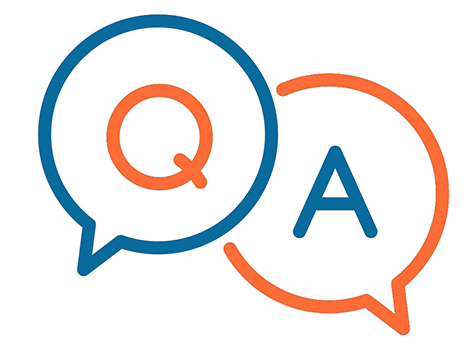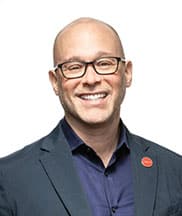
College counselors can help steer high school students to community colleges, but there’s sometimes a disconnect between the counselors and the colleges. Angel B. Pérez, CEO of the National Association for College Admission Counseling, discusses the changes in college counseling and how community colleges can work with counselors to close knowledge gaps and help shift the perception of community colleges.
* * *
Can you talk about the work NACAC does to support college counseling and admissions professionals both in the K-12 system and in higher education?

The National Association for College Admission Counseling (NACAC) is the professional home — at every career stage — for school counselors, admissions officers, staff members of community-based organizations and independent educational consultants. We have members from nonprofits and corporations that serve the field of college admission counseling. We also have members who are students and faculty studying, researching and teaching about admissions.
NACAC provides trusted information, resources and networking opportunities to help individuals be successful in their college admission counseling career. NACAC members represent 5000+ high schools, colleges, universities, community-based organizations, non-profits and independent educational counseling organizations.
This article comes from the current issue of the Community College Journal, published bimonthly by the American Association of Community Colleges.
When I worked as a college admission dean, I relied on NACAC to keep me updated on industry trends, to inform me on how other institutions were approaching shared challenges, and to provide a professional community I couldn’t find anywhere else. College counselors working in K-12 rely on NACAC to provide the expert resources on the college admission process and opportunities to connect with admission officers from institutions around the country and world.
In my role as NACAC’s CEO, I consider myself chief advocate for the profession. I want to provide our members with solutions to their challenges, and there is no shortage of them in higher education. We offer webinars, in-person events, trainings, industry research and the largest annual gathering of college admission counseling professionals in the world. We also advocate at the federal and state level on issues that impact college access. We spend a lot of our time on policy initiatives that ensure our members and their students have the resources they need to succeed.
How has college counseling changed since the start of the pandemic? Are students changing their minds about college?
A major shift that resulted from the pandemic was the growth in institutions moving away from requiring standardized test scores for admission. This is changing where students apply, with many thinking that schools previously out of reach may be ones to consider. This is also creating confusion and questions for families as they navigate the process.
Students are taking more time to think about if they want to be far from family considering the personal challenges that resulted from the pandemic. Students are also eager to be in a community that reflects their values and consider that deeply in the college search process.
For professionals, the pandemic brought on changes seen in other industries: they’re evaluating their circumstances and asking if they’re in the right role, the right place, the right profession. The Great Resignation has left admission offices and counseling teams doing more with less. Public school counselors are stretched especially thin with intense caseloads and meeting the growing well-being needs of students while also providing college counseling. And let’s not forget about mental health, which has impacted both counselors and students. Since a large part of a school counselor’s work day is focused on social emotional counseling and support to students, we established the Ad Hoc Committee on Mental Health and Equity in the Transition to Postsecondary Education.
As college enrollments have dropped at many postsecondary institutions, are recruiting and admissions strategies changing?
I’m hearing more from members about how they’re working to create more outreach with community groups, such as churches, community centers, community-based organizations and other places with youth programming. Colleges are working to diversify their admission offices. Our work to advance equity in college admissions shows this is needed. It’s a win-win for all. Additionally, public-private partnerships are critical. I’m seeing more colleges and universities partner with industry and create deliberate pipelines from high school to college to work. Colleges are funding visits for high-achieving students from low-income backgrounds to make sure they have an opportunity to see a campus in person. A webinar we offer on data-informed territory management is one of our most popular trainings as admission officers seek to use more data for strategic recruiting. Opportunities to connect with admission officers virtually are growing.
Many college counselors in high schools — particularly at private schools — reported in a 2019 NACAC survey that they didn’t feel confident talking about some aspects of community colleges, such as transfer policies and trade certification and licensing. Is there something community colleges can do to better work with these counselors and close this knowledge gap?
Easy-to-use guides and information for counselors, especially items that can be shared with students and families electronically, are helpful. Transfer policies are enduringly confusing for families, so offering case studies on how individual students successfully transferred is helpful. With affordability a major topic for families, showing examples of the financial benefits of attending community college is helpful.
We would also love to see more community colleges become members of NACAC and connect with school counselors through our events, publications, and volunteer leadership opportunities.
A survey you did showed most counselors would recommend community college as an option for students. What are the challenges to getting students to choose a community college and what could help shift perceptions?
Anything a college can do to equip counselors with information on the specific benefits of attending would help change perceptions among students and families. If community colleges don’t already offer campus tours or class visits, those are worth exploring. Profiles of students who chose to attend a community college and what the outcomes were for those students could provide insight to families who are hesitant to consider a community college. Creating ways for high school students to be on the campus of a community college, either through events, enrichment opportunities or academic programs could help change perceptions, especially if those students have an opportunity to connect with faculty or other students.

